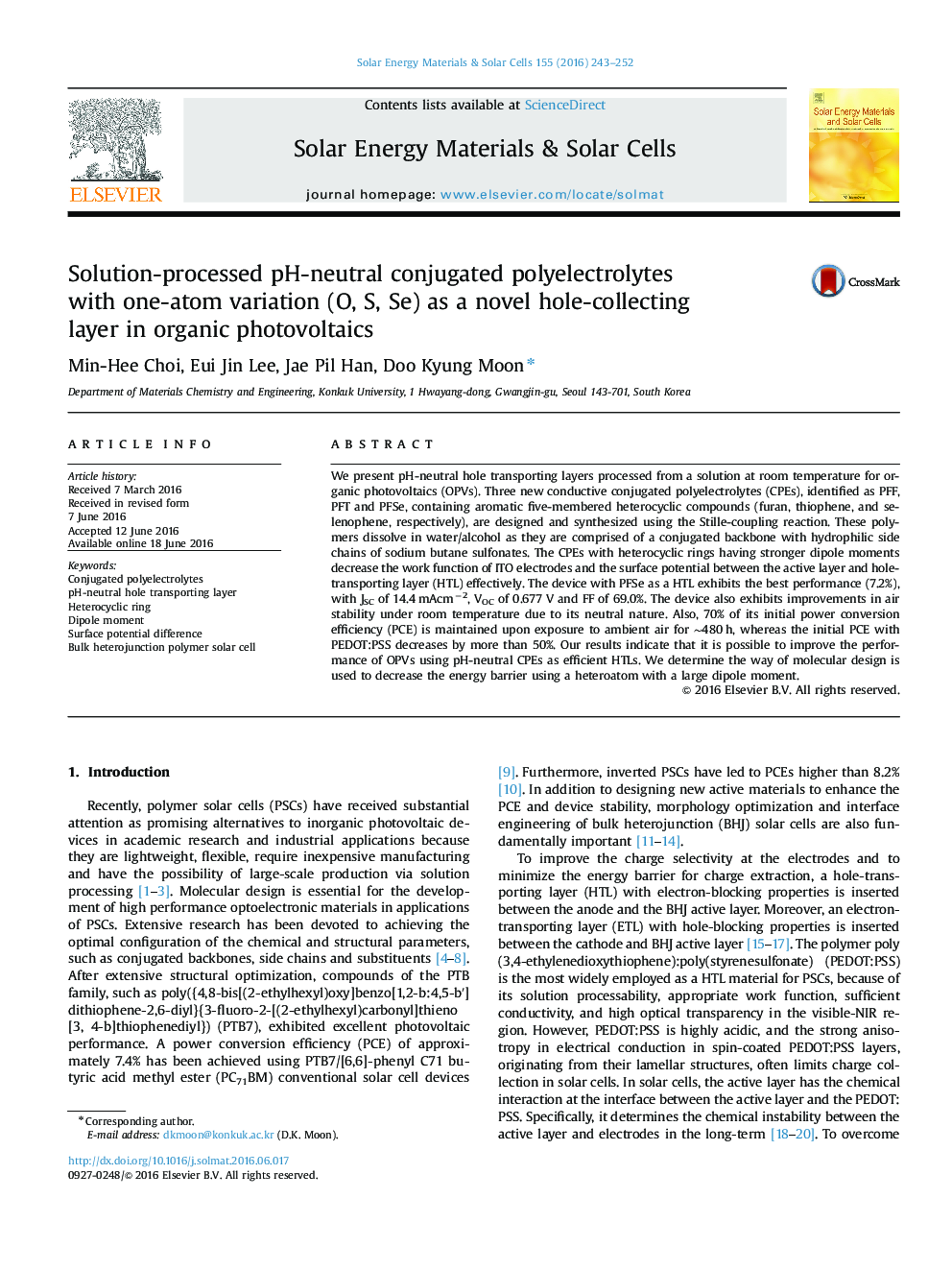| Article ID | Journal | Published Year | Pages | File Type |
|---|---|---|---|---|
| 77511 | Solar Energy Materials and Solar Cells | 2016 | 10 Pages |
•Conjugated polyelectrolytes with different heteroatoms have modified dipole moments.•Work function and surface potential of ITO are changed by the dipole moments of CPEs.•Strong dipole moments lead to an increase in Jsc and air stability.
We present pH-neutral hole transporting layers processed from a solution at room temperature for organic photovoltaics (OPVs). Three new conductive conjugated polyelectrolytes (CPEs), identified as PFF, PFT and PFSe, containing aromatic five-membered heterocyclic compounds (furan, thiophene, and selenophene, respectively), are designed and synthesized using the Stille-coupling reaction. These polymers dissolve in water/alcohol as they are comprised of a conjugated backbone with hydrophilic side chains of sodium butane sulfonates. The CPEs with heterocyclic rings having stronger dipole moments decrease the work function of ITO electrodes and the surface potential between the active layer and hole-transporting layer (HTL) effectively. The device with PFSe as a HTL exhibits the best performance (7.2%), with JSC of 14.4 mAcm−2, VOC of 0.677 V and FF of 69.0%. The device also exhibits improvements in air stability under room temperature due to its neutral nature. Also, 70% of its initial power conversion efficiency (PCE) is maintained upon exposure to ambient air for ∼480 h, whereas the initial PCE with PEDOT:PSS decreases by more than 50%. Our results indicate that it is possible to improve the performance of OPVs using pH-neutral CPEs as efficient HTLs. We determine the way of molecular design is used to decrease the energy barrier using a heteroatom with a large dipole moment.
Graphical abstractFigure optionsDownload full-size imageDownload as PowerPoint slide
